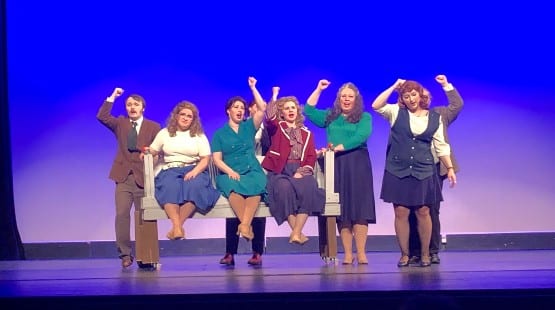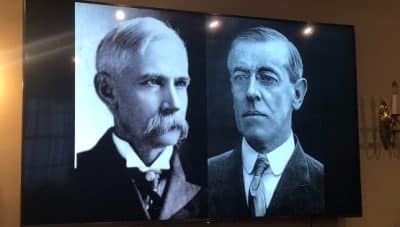
[email protected]
But I do it to try to make you consider something that you might not otherwise. Namely, that the whole idea rests on the notion that a Downtown Waynesboro baseball stadium could draw 4,000 fans a night, 70 nights a year, when nobody involved in the behind-the-scenes on the project has the slightest inkling as to whether even a single person will ever turn the turnstiles.
“I know that I’d like to have a firmer idea of what we’re talking about here,” Waynesboro mayor Tom Reynolds told me two weeks after the news hit the front page of The News Virginian that a Charlottesville developer had initiated discussions with city leaders to gauge their interest in locating a professional-baseball team in the downtown district.
Reynolds had told me the day before the Feb. 15 story in the local paper that he had been in on the discussions in the months leading up to that point in time, and he came across to me then as enthusiastic about the prospects for seeing the project come to fruition. Other members of Waynesboro City Council have come across the same way, most surprisingly the two self-identified fiscal-conservative members of the council, Frank Lucente and Tim Williams, both of whom told News Virginian reporter Jimmy LaRoue that they would offer their support to the effort.
“Anything that we can do to get downtown moving is a good thing,” Lucente told LaRoue. “But this is something that can work.”
“I will do everything in my power to make it happen,” Williams told LaRoue.
I was right there with them at the start, but now after doing some research, particularly talking with one of the country’s foremost authorities on the economics of minor-league baseball, Smith College economics professor Andrew Zimbalist, well, I think we might have to ask a few more questions before we go down this road any further.
“The research on the general story of a minor-league ballpark doesn’t suggest that there’s any economic-development benefit to be anticipated just from a park itself or a ballteam itself. Sometimes the parks come along with some side development, and altogether the project might be a positive influence. But the ballpark or a team by itself doesn’t have that impact. And that goes all the way up to Triple-A. If you’re talking about Single-A, it’s even more likely to be the case. And if you’re talking about independent league, it’s even more likely to be the case,” said Zimbalist, the author of Baseball and Billions: A Probing Look Inside the Big Business of Our National Pastime, Sports, Jobs and Taxes: The Economic Impact of Sports Teams and Stadiums, and May the Best Team Win: Baseball Economics and Public Policy.
That last comment is significant because the current talk about baseball in Waynesboro involves two scenarios – one that could land a Single-A Carolina League team in the River City, and a second that would involve the independent Atlantic League, a professional league that is not affiliated with Major League Baseball.
The Atlantic League is expanding down the East Coast, with a new team coming online this spring with the debut of the Southern Maryland Blue Crabs, who will open the new $26 million Regency Furniture Stadium on May 2.
There are some interesting parallels between the Charles County project and the proposed Waynesboro stadium project. The talk in Waynesboro has been about housing its team in a 4,000- to 4,500-seat stadium that would be built for an estimated $20 million. Regency Furniture Stadium is 4,500 seats, and was supposed at the outset to cost $18 million to build, before coming in at $26 million when all was said and done.
And the Waynesboro project is being envisioned as being a public-private project, with the city, the state and the developers each pitching in a third of the costs to build the stadium. That was the financial model used in Charles County, where local officials began their most recent efforts toward landing a team in their locality in 2004, according to Gary Hodge, a member of the Charles County Commissioners’ Office, the local governing body.
“Where before we had looked at the county bearing almost the total burden of building the stadium, and that had been a general practice throughout professional sports, not just minor-league ball, but professional baseball and football and et cetera, where the host community seemed in most cases to be saddled with the burden of building the facility, and then attracting a team or tenant to the facility. But in the modern era, where there’s been quite a bit of evolution in the industry, it’s now quite common for the team to play a major role in constructing the facility,” Hodge told me.
“That’s the model that we followed here – where we have the team and the county and the state all carrying an equal one-third share of the cost,” Hodge said.
A potential hurdle for the Waynesboro project is that Virginia traditionally has not followed a similar economic-development model with regard to the construction of sports stadiums and arenas as has been established in Maryland. And then add to that the budget crisis in Richmond that had state leaders debating all winter about cutting the state budget to the absolute bone.
“And then the numbers started changing,” Tom Reynolds said in Waynesboro. “The idea of cost for this stadium at $20 million split three ways, including city, state and then private investors – what I’m beginning to pick up is that the number’s really going to be more like $30 million, and that the state is not going to be all that enthusiastic in investing $10 million in Waynesboro right now with their budget the way it is.
“But that certainly is the expectation of the investors – that the city would come up with a third, the state a third and them a third. And you know how tight things are – the state is cutting things across the board, and they’re telling localities and school boards that they’re not going to get all the money that they originally anticipated, and that sort of stuff,” Reynolds said.
That all having been said, those are potential hurdles, and hurdles can be overcome. But the leap will come, I hope, only after some sound analysis of just how much bang the city and state could each get for their six to ten million dollars apiece.
The Six to Ten Million Dollar Question, then, is, to bring back thoughts of Kevin Costner having a catch with his late father, If they build it, will they come?
“Unless a stadium attracts those fans who wouldn’t have come to the games otherwise, and attract them to stay for longer periods of time than they would have otherwise, it’s probably not going to generate any meaningful benefits,” said Dennis Coates, an economics professor at the University of Maryland-Baltimore County and the coauthor of a study, “Caught Stealing: Debunking the Economic Case for D.C. Baseball,” that was published by the conservative Cato Institute.
Coates has also studied the economic impact of football stadiums on local economies, and his research and the research of others in the sports-economics field has shown that baseball doesn’t turn up well in a head-to-head comparison.
“Virtually every professional football game in our data was on a Sunday. One might envision that people would travel to the location on a Friday night, spend a couple of days, and then leave on a Sunday, so that they’re actually in the community for a while. With baseball, most of the games are not on weekends. There’s many games in a short period of time. So the likelihood of traveling to spend much significant time is smaller. And it’s only going to generate benefits if people are coming that wouldn’t have come before, and most of those people are going to be people from out of town,” Coates said.
Andrew Zimbalist back at Smith College has a similar point of view as Coates on the will-they-come issue.
“The only way these things generate any potential development is if it attracts people from outside the area into the area. And that’s not very likely to happen for any minor-league team. And as you go down in stature, particularly all the way down to independent league, you’re just not likely to get that. That’s not to say there’s never going to be anybody, but they’re going to be few and far between. And it’s going to cost the city money,” Zimbalist said.
“So where does the money come from? It either has to come from new taxes, or it has to come from lower services – both of which are not good for a local economy. So even if you attract an occasional person from outside the area, there have got to be enough of them to offset the budgetary affect,” Zimbalist said.
“I don’t like to pooh-pooh things. And if people feel like it’s going to be important culturally or socially to have a minor-league team there, that it will create wholesome family entertainment and do something that unifies the community in some meaningful way, then they should think about if they want to spend that money for that purpose. But it’s really a social and cultural event. It’s not an economic event,” Zimbalist said.
Allow me to insert one more “Field of Dreams” reference here, if you will.
Say it ain’t so, Joe.
“It’s different than if you were to attract, say, an automobile company,” Zimbalist told me. “You produce automobiles there, and then you sell them to the rest of the country and the rest of the world. And if I buy an automobile produced in Virginia in Massachusetts, I have to send you $30,000, and that’s $30,000 that goes into your community. But I’m not going to go down and watch your minor-league baseball team. The people that watch your baseball team are going to be locals. So you don’t get money from the outside. What happens is that money recirculates. People will go to the ballpark instead of going to the movie theater or a restaurant – and there’s no net gain for the area in that regard.
“There certainly will be jobs if you have a team there. People will work in the front office, and people will work in the stadium. But in the aggregate, citizens in the area are spending money at the ballpark that they would have otherwise spent at the local bowling alley or a restaurant or the theater. And then the jobs that would have been at the bowling alley or theater or the restaurant are now at the ballpark. It’s not a net job creation,” Zimbalist said.
The mayor seems to have been briefed on these developments as well. When we first talked a couple of months ago, he was counting down the days until the stadium could open its doors.
“I’m an old athlete myself,” Tom Reynolds said to me. “I know what sports can mean to a community. Think about it. Back in the ’80s, when the girls-basketball team was so strong, and the whole community got into it. And just recently with the basketball and baseball teams being so strong, and the whole community getting into it. It becomes something that the whole community can wrap their minds around and get enthusiastic about. And it does – it does draw the whole community together.
“But what we need to know, at least from the city’s standpoint, before we start writing checks, is what is it going to be? Let’s look at some real things here. Let’s look at some business plans. We’re invested to our eyeballs right now in infrastructure and the capital-improvements plan. We’re certainly willing to look at additional things, but we need to know what it is before we just start dumping money into it,” Reynolds said.
If you build it, they will come.











